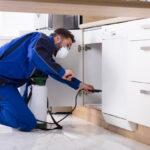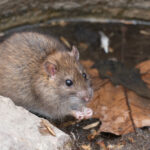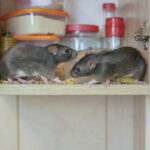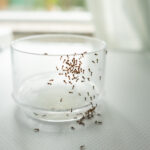Pre-emptive Pest Management: Proofing Strategies for Homes and Business
Pre-emptive Pest Management: Proofing Strategies for Homes and Business
Preventing pest infestations, particularly from rodents, is essential for both homes and businesses to maintain safety, hygiene, and structural integrity. Rodents like rats and mice can cause extensive damage by gnawing through electrical wires, insulation, and building materials, leading to costly repairs and even fire hazards.
extensive damage by gnawing through electrical wires, insulation, and building materials, leading to costly repairs and even fire hazards.
Additionally, they carry diseases such as Hantavirus and Salmonella, posing significant health risks. Insects like cockroaches and ants can also spread disease and contaminate food sources, posing health risks to occupants. However, with proper preemptive pest management strategies in place, property owners can avoid these issues altogether.
In this post, you will find Proofing Strategies for Homes and Businesses, why you should proof against pests, and tips for when you are proofing. Follow as many of these methods as possible, and you will surely have a pest-free environment in no time!
Why Should You Proof Against Pests?
Aside from the damages and health risks mentioned above, there are other reasons why proofing against pests is crucial.
- Prevent inventory loss and property damage: Pest infestations can cause businesses to lose inventory or damaged goods, leading to financial losses.
- Maintain cleanliness and hygiene: Pests like cockroaches, flies, and rodents contaminate surfaces with their droppings and saliva, posing a threat to human health.
- Protect reputation: A pest infestation can harm a business’s reputation, especially in industries where food safety is critical.
- Avoid legal issues: Pests can violate health and safety regulations, leading to legal consequences for homes and businesses.
Proofing for Rodents
Rodent proofing your home or business is crucial in safeguarding against potential damage and health risks. Rodents, including rats and mice, can gnaw through electrical wiring, insulation, and
These pests (rats & mice) can infiltrate premises through openings as small as a pencil, squeezing through tiny cracks or crevices in search of food and shelter. Effective pest proofing involves sealing entry points, especially around utility pipes, vents, and doors, and maintaining cleanliness to deter these invaders. Regular inspections and maintenance routines are essential to ensure the integrity of your property, preventing rodents from establishing a foothold and protecting both your investment and well-being.
Pest Proofing Tips for Your Home or Business
- Air Bricks and Vents – Cover air bricks and vents with fine, rust-proof wire mesh to allow ventilation while keeping pests out. Ensure the mesh is tightly secured and inspect regularly to remove any debris that may block airflow.
- Doors – Fit bristle or brush strips at the bottom of doors to prevent pests from entering, especially in older buildings. Check weather stripping around door edges and replace if worn.
- Drains and Sewer Pipes – Use tightly fitting metal grates or screens to cover drains and sewer pipes. This prevents pests like rodents and insects from entering through these access points.
- Eaves – Repair damaged roofing and use wire mesh to seal any gaps around eaves and fascia boards. Regularly inspect for signs of nesting or entry points for pests.
- Entrances – Pests can enter through small gaps around doors or garage entries. Install door strips, and consider adding extra protection around entry points such as garages, utility rooms, and basements.
- Gaps in Exterior Walls – Seal any holes or small openings around utility cables or pipes with stainless steel wire wool and caulking. Larger gaps can be covered with steel or aluminium
plating to prevent pests from getting in.
- Lawns – Keep grass trimmed short and avoid placing mulch or wood chips near the foundation, as they provide shelter for pests. Place bird feeders away from the building to avoid attracting rodents and insects.
- Pipework – Seal gaps around pipes with stainless steel wire wool and caulking, paying close attention to areas in kitchens and bathrooms where pipes enter through walls or floors.
- Roofs – Repair broken roof tiles and use wire mesh to cover gaps in the roof. Install gutter guards and regularly clean gutters to prevent debris buildup that could attract pests. Consider fitting chimney caps to prevent entry through chimneys.
- Vegetation – Trim back tree branches and avoid plants growing directly against the house. Overgrown vegetation near walls can serve as shelter and entry points for pests.
- Crawl Spaces and Basements – Seal crawl space entrances and use rodent-proof mesh on ventilation grates. Regularly inspect foundation walls for any openings or cracks.
- Garbage and Composting Areas – Store garbage in tightly sealed, pest-proof containers. Keep compost bins away from the house, and avoid composting materials that attract pests. Turn the compost regularly to deter nesting.
- Garages and Sheds—Keep garage doors closed when not in use and install weather stripping along the bottom. Store pet food, seeds, and supplies in sealed containers to prevent pests from attracting them. Inspect regularly for gaps or holes.
- Attics and Lofts – Regularly check attics and lofts for signs of pests, such as droppings or chewing. Ensure insulation and stored items are not used as nesting material and block potential access points.
- Pet Doors – Install locking or electronic pet doors to prevent pests from following your pets inside. Regularly inspect the area around pet doors for signs of entry attempts.

For Professional Help Trust Youngs Pest Control
Ready to protect your home or business from costly pest infestations? At Youngs Pest Control, we specialise in comprehensive commercial pest control and effective pest control services tailored to your needs. Don’t wait for an infestation to take hold—take proactive steps today to secure your property and peace of mind.
Call us at 0161 776 9832, email rick@youngspestcontrol.co.uk, or visit youngspestcontrol.co.ukto schedule your professional pest-proofing consultation now! Let our experts safeguard your space and ensure a pest-free environment year-round.

